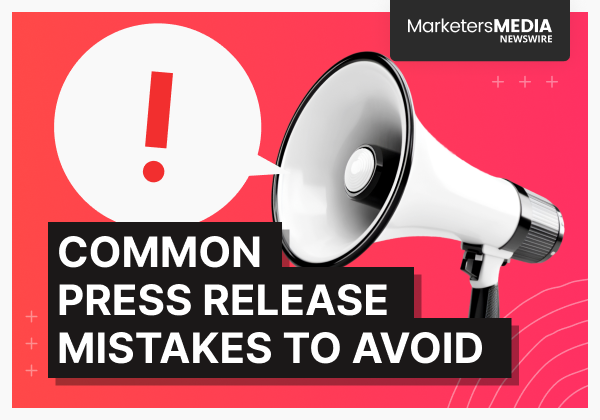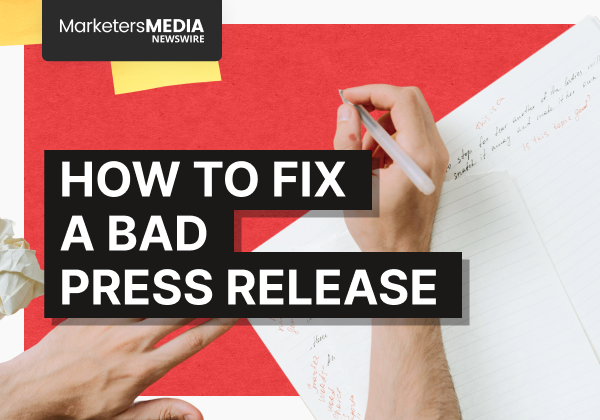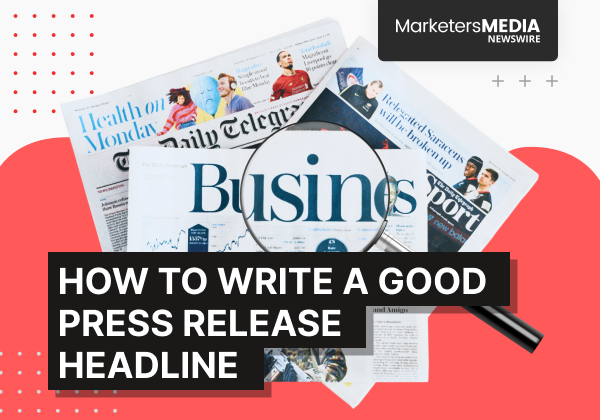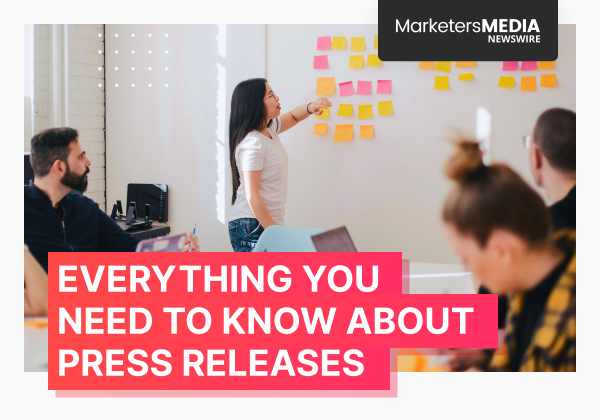Table of Content
- 1. Not Picking a Newsworthy Story
- 2. Writing a Weak Headline
- 3. Making It Sound Like an Ad
- 4. Forgetting Who Your Audience Is
- 5. Not Following the Right Format
- 6. Using Generic or Scripted Quotes
- 7. Skipping Multimedia
- 8. Sending a Half-Baked Pitch
- 9. Choosing a Poor Distribution Service
- 10. Not Promoting on Your Own Channel
- 11. Sending It at the Wrong Time
- 12. Ignoring SEO Optimization
- 13. Not Proofreading
- 14. No Clear Call to Action
Press releases are an opportunity for brands, businesses, and organizations to reach their target audience through the media.
Although many might deem press releases as being less important, especially with the explosion of social media and digital transformation, they can still be very effective in boosting your profile and attracting new audiences.
The goal of a press release is to make every piece of writing concise, impactful, polished, and clear. Writing a good press release isn’t complicated, but there are some important rules to follow and mistakes to avoid if you want to increase your chances of scoring publicity.
So, in no particular order, here are 14 common mistakes often found in press releases.
1. Not Picking a Newsworthy Story
One of the biggest mistakes is assuming everything your company does is newsworthy. Here’s the reality: if it doesn’t matter to people outside of your team, it’s not news.
Journalists aren’t looking to promote your business; they’re looking for stories their audience cares about.
So, before you send a press release, ask yourself, “Is this important to anyone else?” If the answer is “probably not,” it’s time to rethink the angle.
What makes a story newsworthy? Think about things like:
- New product launches that solve a real problem or fill a gap in the market.
- Significant event announcements (e.g., hosting a sports tournament).
- Changes in management, if it’s someone key or well-known.
- Major company milestones that reflect growth or success.
Feel free to check out this blog post for more newsworthy press release examples.
The key is to be selective and think about what matters not just to you, but to your audience and the media.
2. Writing a Weak Headline
Once you’ve got a newsworthy story, the next big hurdle is the headline.
A strong story with a weak headline is like wrapping a great gift in plain brown paper—no one’s going to be excited to open it.
Your headline is the first (and sometimes only) chance to grab attention, so it needs to make them stop, click, and read.
Here’s what you need to avoid:
- Being too vague: “Company announces new product” is not going to cut it. Be specific about what the product does or why it’s important.
- Overly complex headlines: If people have to read your headline twice to understand it, you’ve already lost them.
- Failing to highlight the key takeaway: The headline should summarize the most important aspect of your story in a concise, attention-grabbing way.
However, there’s a fine line between intriguing and misleading. Don’t make grand promises in the headline that your press release doesn’t deliver. Nothing kills trust faster than a clickbait-y headline that leads to a boring or unrelated story. If you raise expectations, make sure your press release follows through, or you risk damaging your credibility.
Keep your headline simple, direct, and under 90 characters. Journalists don’t have time to decode complicated headlines, and readers certainly won’t stick around to figure out what you meant.
3. Making It Sound Like an Ad
Show, don’t tell.
Too many releases read like advertisements, packed with clichés and over-the-top claims like “amazing,” “top-notch,” “cutting-edge,” and “incredible.”
If you’ve ever browsed a news site or flipped through a newspaper, you’ll see the difference: ads are blatant sales pitches, while news stories aim to inform and educate from a neutral, fact-based perspective. Your press release should do the same.
Instead of calling your product “amazing,” show why it’s amazing. Here’s the difference:
Tell:
“The tree is magnificent!”
Show:
“The 2,000-year-old Redwood stood over 300 feet tall, towering above the forest in Yorkshire Dale State Park. Its thick, twisted trunk cast a shadow, while its vibrant green leaves reached for the sky.”
See the difference? Don’t tell a journalist your company is great. Describe what makes it great. Use facts, statistics, and evidence, so journalists can draw their own conclusions.
4. Forgetting Who Your Audience Is
Every press release should be tailored to its intended audience. Are you targeting industry professionals, general consumers, investors, or a specific demographic? Understanding who you're writing for helps you choose the right tone, language, and level of detail.
For example, a press release about a technical innovation in your product might use more specialized language if it's aimed at industry insiders, but would need to be explained in simpler terms for a general audience.
Failing to consider your audience can lead to a release that fails to engage or even alienates its readers.
5. Not Following the Right Format
Press releases follow a standard structure because it’s the industry norm. Skip this structure, and you risk confusing your readers or being ignored.
The best approach is to follow the inverted pyramid style: start with the most important information at the top, then add supporting details. Journalists expect this format because it helps them quickly get to the key points. They don’t have time to dig through fluff.
Always use clear, concise language, keep it in the third person, and avoid jargon unless it's specific to your target audience. Short sentences and paragraphs make your press release more readable. Stick to the right format, and your message will have a much better shot at being picked up.
For more guidance on how to structure your press release, check out this press release template and format guide.
6. Using Generic or Scripted Quotes
There’s nothing worse than a bland, scripted quote that sounds like it was plucked from a corporate playbook. Quotes should add value and personality to your press release, not sound like a robot talking. If your quote reads like a generic line that could come from any company, it’s not going to resonate.
A good quote brings your story to life. It should sound natural, authentic, and actually offer insight. Instead of writing, “We are excited to announce our new product,” try to include something meaningful. Think about what a real person in your company would say in a conversation, and use that to capture the reader’s interest.
Avoid the overused phrases like “thrilled” or “delighted.” These words don’t tell the reader anything new. Instead, have your quotes explain why the announcement matters or how it affects customers, the industry, or the public.
Make sure your quotes sound like they come from an actual human being, not a press release template.
7. Skipping Multimedia
Think about it: which would you prefer—a wall of text or a multimedia press release that includes eye-catching visuals that illustrate the story?
Adding multimedia makes your press release more interesting and can significantly boost engagement. Journalists are more likely to pick up a story that has compelling visuals ready to go, and readers are more likely to stick around when there’s something to look at.
Images of your product, behind-the-scenes videos, or even a simple infographic can help bring your story to life. Plus, multimedia content often gets better visibility in search results and on social media.
Example:
8. Sending a Half-Baked Pitch
A half-baked pitch can come across as careless or incomplete, making it easy to ignore.
When crafting your press release email, take the time to fine-tune your pitch before you send it out. It should include a brief overview of what’s in your press release, why it’s important, and why it matters to the journalist or their audience. Keep it simple, personal, and to the point—no one wants to read through paragraphs of filler.
Journalists can tell when a pitch has been thrown together last minute. The more thoughtful and targeted your pitch is, the better your chances of getting your press release picked up.
9. Choosing a Poor Distribution Service
Even the best-written press release can fall flat if it doesn’t reach the right audience.
Not all distribution services are created equal, and going with a subpar one could mean your news gets buried or never reaches the relevant journalists.
A good distribution service ensures your press release is sent to the right people at the right time. Services like MarketersMEDIA Newswire offer proper targeting options, ensuring your news reaches the journalists and outlets that actually cover your industry.
If you’re not careful about where and how your press release gets distributed, all that hard work writing and refining it could go to waste. Do your research and choose a service that gives your press release the best chance to be seen.
10. Not Promoting on Your Own Channel
While distributing press releases through a service is great for reaching new audiences, but don’t overlook the power of your own channels. Posting your press release on your website, sharing it through social media, and sending it to your email list can give your news extra legs.
Think of it as giving your press release more opportunities to be seen by people who already care about what you’re doing. It’s a simple way to boost visibility and engagement, while also driving traffic back to your site. Promoting on your own channels works hand in hand with distribution services, helping your news reach as many people as possible.
More places = more chances for your story to get picked up.
11. Sending It at the Wrong Time
Timing is everything when it comes to press releases. Even the most well-written release can flop if it’s sent at the wrong moment. Hitting inboxes during a major holiday, weekend, or outside business hours can lead to your press release getting buried or ignored.
So, what’s the best time to send a press release? Typically, mid-morning on a weekday works best. Avoid sending it too early or too late in the day, and stay away from weekends or times when journalists are less likely to be checking their inboxes.
Also, keep an eye on industry events and holidays. If a big event is dominating the news cycle, it’s probably not the right time to launch your own announcement.
Know that it is okay to hold off a day or two to find the right moment to publish your release as it makes a big difference in how your release is received.
12. Ignoring SEO Optimization
Especially in today’s digital world, ignoring SEO means missing a chance to reach a wider audience. Search engines are one of the first places journalists and readers go for news, and a press release optimized for SEO has a better shot at showing up in search results.
For example, if you’re launching a new product, include relevant keywords like “eco-friendly water bottle” or “wireless charging device” in your headline and body. Using descriptive headlines like “Company X Unveils Eco-Friendly Water Bottle with Advanced Insulation Technology” not only catches attention but also helps your release rank better in search results. Don’t forget to link back to your website to direct traffic.
A clear, well-written, and search-friendly press release can help boost visibility and get your news in front of more people.
13. Not Proofreading
Nothing ruins a press release faster than typos, grammatical errors, or missing information. It makes your company look unprofessional and careless.
Just look at this example. You wouldn’t approve a press release with obvious mistakes, right? Journalists and readers expect polished content, and even minor slip-ups can make them tune out.
Take the time to proofread carefully. This is your chance to catch errors, incomplete information, broken links, or awkward phrasing. Rushing through this step could send your press release straight to the trash, no matter how important your news is.
14. No Clear Call to Action
What do you want the reader to do after they read your press release?
While a press release isn't a direct advertisement, it should still guide readers on what to do with the information you've provided.
Your CTA doesn't have to be sales-focused. It could be directing readers to visit your website for more information, inviting them to an event, or suggesting they download a report.
Whatever it is, make sure it's clear and relevant to the news you're sharing.
Wrapping Up
By avoiding these common mistakes, you’ll be well on your way to crafting more effective press releases.
Need a refresher on how to write an effective press release? This Press Release 101 guide breaks down the basics and will guide you through everything from structure to distribution.
Now, go write something great.
Free Press Release Template
Tell us where to send your PDF:








